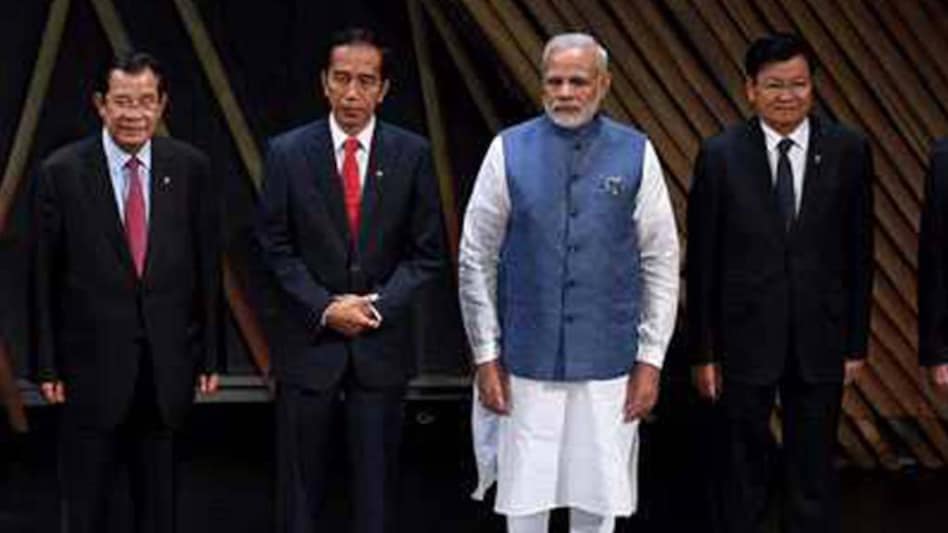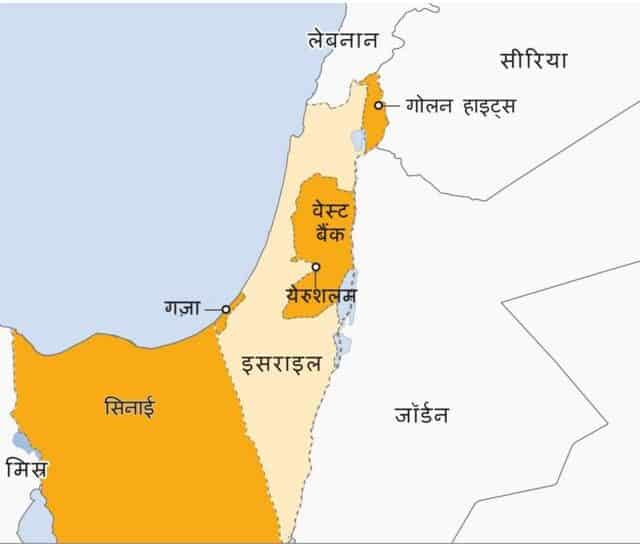What is ASEAN?
- The Association of Southeast Asian Nations is a regional organization which was established to promote political and social stability amid rising tensions among the Asia-Pacific’s post-colonial states.
- The motto of ASEAN is “One Vision, One Identity, One Community”.
- 8th August is observed as ASEAN Day.
- ASEAN Secretariat – Jakarta, Indonesia
ASEAN: Origin
- After Second World War, most of the South-Asian colonies attained independence. But they also had internal dispute regarding territories and borders.
- One such dispute was Indonesia-Malaysia conflict over the Borneo islands.
- This conflict + the then ongoing Vietnam War raised fears of increased external involvement in the newly independent states.
- They feared that south east region would become a theatre of western vs. communist ideologies
- Hence they decided to form a common platform:
- To resolve bilateral issues among themselves
- Present a collective front to the world.
- 1967, five countries signed “Bangkok declaration” to form the Association of Southeast Asian Nations (ASEAN), later another 5 joined. Thus today ASEAN has 10 members.
Member Nations
- Indonesia
- Malaysia
- Philippines
- Singapore
- Thailand
- Brunei
- Vietnam
- Laos
- Myanmar
- Cambodia
ASEAN follows the principle of “ASEAN way”. Meaning,
- deliberation and consensus
- don’t use force/confrontation
- don’t interfere in the internal matters of states
- Informal discussion
- minimal institutionalization
To achieve “the ASEAN way”, Treaty of Amity and Cooperation in Southeast Asia (TAC) was signed. The TAC is a peace treaty signed in 1976 between ASEAN members to establish a set of guidelines to govern inter-state relations in the region.
TAC Treaty
It provides the guiding principles of ASEAN
- They’ll not interfere in the internal affairs of one another,
- They’ll not use threat or use of force to settle differences / disputes
- They’ll settle of differences or disputes by peaceful means,
- They’ll effectively cooperate among themselves.
- They’ll mutually respect each other’s’ independence, sovereignty, equality, territorial integrity and national identity.
- Every State has right lead its national existence free from external interference, subversion or coercion.
India had signed TAC treaty with ASEAN in 2003.
Genesis of ASEAN
- 1967 – ASEAN was established with the signing of the ASEAN Declaration (Bangkok Declaration) by its founding fathers.
- Founding Fathers of ASEAN are: Indonesia, Malaysia, Philippines, Singapore and Thailand.
- 1990s – Membership doubled after the changing conditions in the region following the end of the Vietnam War in 1975 and the Cold War in 1991.
- Addition of Brunei (1984), Vietnam (1995), Laos and Myanmar (1997), and Cambodia (1999).
- 1995 – Members signed a deal to create a nuclear-free zone in Southeast Asia.
- 1997 – Adoption of ASEAN Vision 2020.
- 2003 – Bali Concord II for the establishment of an ASEAN Community.
- 2007 – Cebu Declaration, to accelerate the establishment of ASEAN Community by 2015.
- 2008 – ASEAN Charter comes into force and becomes a legally binding agreement.
- 2015 – Launch of ASEAN Community.
- ASEAN Community is comprised of three pillars:
- ASEAN Political-Security Community
- ASEAN Economic Community
- ASEAN Socio-Cultural Community
- ASEAN Community is comprised of three pillars:
Objectives
- To accelerate economic growth, social progress and cultural development for a prosperous and peaceful community of Southeast Asian Nations.
- To promote regional peace and stability through abiding respect for justice and the rule of law and adherence to the principles of the United Nations Charter.
- To promote active collaboration and mutual assistance on matters of common interest in the economic, social, cultural, technical, scientific and administrative fields.
- To collaborate more effectively for the greater utilisation of agriculture and industries, the expansion of their trade, the improvement of transportation and communications facilities and the raising of the living standards of peoples.
- To promote Southeast Asian studies.
- To maintain close and beneficial cooperation with existing international and regional organisations.
The ASEAN fundamental principles, as contained in the Treaty of Amity and Cooperation in Southeast Asia (TAC) of 1976
- Mutual respect for the independence, sovereignty, equality, territorial integrity, and national identity of all nations.
- The right of every State to lead its national existence free from external interference, subversion or coercion.
- Non-interference in the internal affairs of one another.
- Settlement of differences or disputes by peaceful manner.
- Renunciation of the threat or use of force.
- Effective cooperation among themselves.
Institution Mechanism
- Chairmanship of ASEAN rotates annually, based on the alphabetical order of the English names of Member States.
- ASEAN Summit: The supreme policy making body of ASEAN. As the highest level of authority in ASEAN, the Summit sets the direction for ASEAN policies and objectives. Under the Charter, the Summit meets twice a year.
- ASEAN Ministerial Councils: The Charter established four important new Ministerial bodies to support the Summit.
- ASEAN Coordinating Council (ACC)
- ASEAN Political-Security Community Council
- ASEAN Economic Community Council
- ASEAN Socio-Cultural Community Council
- Decision Making: The primary mode of decision-making in ASEAN is consultation and consensus.
However, the Charter enshrines the principle of ASEAN-X – This means that if all member states are in agreement, a formula for flexible participation may be used so that the members who are ready may go ahead while members who need more time for implementation may apply a flexible timeline.
ASEAN-led Forums
- ASEAN Regional Forum (ARF): Launched in 1993, the twenty-seven-member multilateral grouping was developed to facilitate cooperation on political and security issues to contribute to regional confidence-building and preventive diplomacy.
- ASEAN Plus Three: The consultative group initiated in 1997 brings together ASEAN’s ten members, China, Japan, and South Korea.
- East Asia Summit (EAS): First held in 2005, the summit seeks to promote security and prosperity in the region and is usually attended by the heads of state from ASEAN, Australia, China, India, Japan, New Zealand, Russia, South Korea, and the United States. ASEAN plays a central role as the agenda-setter.
Strengths & Opportunities
- ASEAN commands far greater influence on Asia-Pacific trade, political, and security issues than its members could achieve individually.
- Demographic dividend – It constitutes 3rd largest population in the world, of which more than half is below thirty years of age.
- Economic:
- 3rd largest market in the world – larger than EU and North American markets.
- 6th largest economy in the world, 3rd in Asia.
- Free-trade agreements (FTAs) with China, Japan, South Korea, India, Australia and New Zealand.
- Fourth most popular investment destination globally.
- ASEAN’s share of global exports has also risen, from only 2 percent in 1967 to 7 percent by 2016, indicating the rising importance of trade to ASEAN’s economic prospects.
- The ASEAN Single Aviation Market and Open Skies policies have increased its transport and connectivity potential.
- ASEAN has contributed to regional stability by building much-needed norms and fostering a neutral environment to address shared challenges.
Challenges
- Regional imbalances in the economic and social status of its individual markets.
- Gap between rich and poor ASEAN member states remains very large and they have a mixed record on income inequality.
- While Singapore boasts the highest GDP per capita—nearly $53,000 (2016), Cambodia’s per capita GDP is the lowest at less than $1,300.
- Many regional initiatives were not able to be incorporated into national plans, as the less developed countries faced resource constraints to implement the regional commitments.
- The members’ political systems are equally mixed with democracies, communist, and authoritarian states.
- While the South China Sea is the main issue exposing the organization’s rifts.
- ASEAN has been divided over major issues of human rights. For example, crackdowns in Myanmar against the Rohingyas.
- Inability to negotiate a unified approach with regards to China, particularly in response to its widespread maritime claims in the South China Sea.
- The emphasis on consensus sometimes becomes the a chief drawback – difficult problems have been avoided rather than confronted.
- There is no central mechanism to enforce compliance.
- Inefficient dispute-settlement mechanism, whether it be in the economic or political spheres.
India and ASEAN
- India’s focus on a strengthened and multi-faceted relationship with ASEAN is an outcome of the significant changes in the world’s political and economic scenario since the early 1990s and India’s own march towards economic liberalisation. India’s search for economic space resulted in the ‘Look East Policy’. The Look East Policy has today matured into a dynamic and action oriented ‘Act East Policy.
- India has a separate Mission to ASEAN and the EAS in Jakarta.
- India and ASEAN observed 25 years of their Dialogue Partnership, 15 years of Summit Level interaction and 5 years of Strategic Partnership in 2017.
- Connectivity:
- ASEAN-India connectivity is a priority for India as also the ASEAN countries.
- In 2013, India became the third dialogue partner of ASEAN to initiate an ASEAN Connectivity Coordinating Committee-India Meeting.
- While India has made considerable progress in implementing the India-Myanmar-Thailand Trilateral Highway and the Kaladan Multimodal Project, issues related to increasing the maritime and air connectivity between ASEAN and India and transforming the corridors of connectivity into economic corridors are under discussion.
- A possible extension to India-Myanmar-Thailand Trilateral Highway to Cambodia, Lao PDR and Viet Nam is also under consideration.
- Economic Cooperation:
- ASEAN is India’s fourth largest trading partner.
- ASEAN India-Business Council (AIBC) was set up in 2003 to bring key private sector players from India and the ASEAN countries on a single platform.
- Socio-Cultural Cooperation: Programmes to boost People-to-People Interaction with ASEAN, such as inviting ASEAN students to India, Special Training Course for ASEAN diplomats, Exchange of Parliamentarians, etc.
- Funds: Financial assistance has been provided to ASEAN countries from the following Funds:
- ASEAN-India Cooperation Fund
- ASEAN-India S&T Development Fund
- ASEAN-India Green Fund
- Delhi Declaration: To identify Cooperation in the Maritime Domain as the key area of cooperation under the ASEAN-India strategic partnership.
- Delhi Dialogue: Annual Track 1.5 event for discussing politico-security and economic issues between ASEAN and India.
- ASEAN-India Centre (AIC): To undertake policy research, advocacy and networking activities with organizations and think-tanks in India and ASEAN.
- Political Security Cooperation: India places ASEAN at the centre of its Indo-Pacific vision of Security and Growth for All in the Region
- In Agriculture, we are cooperating with ASEAN by way of projects such as Exchange of Farmers, ASEAN-India Fellowships for Higher Agricultural Education in India and ASEAN, Exchange of Agriculture Scientists, Empowerment of Women through Cooperatives, Training Course on Organic Certification for Fruits and Vegetables etc.
Also refer :




